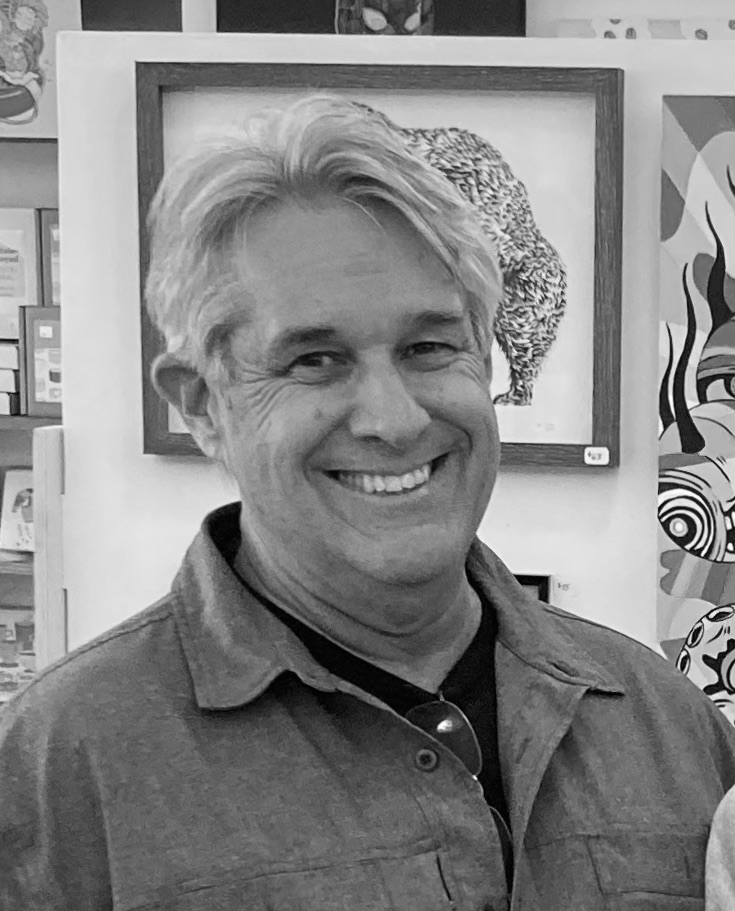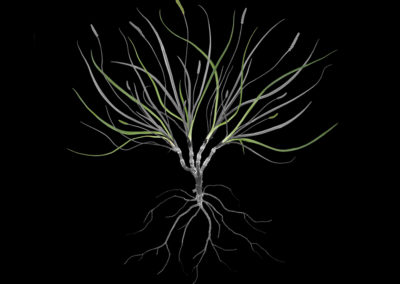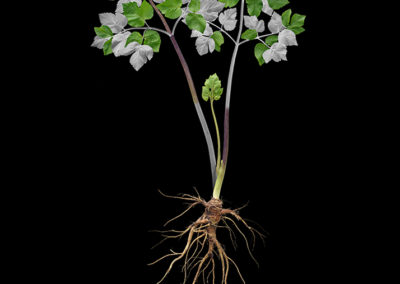“The greatest delight which the fields and woods minister is the suggestion of an occult relation between man and vegetable. They nod to me and I to them.” – Ralph Waldo Emerso
When you open your preface with a quote from such a towering figure in American letters, you set a high bar for your following performance. Jimmy W. Fike has set out to do this in his new book Edible Plants: A Photographic Survey of the Edible Botanicals of North America, published by the University of Indiana Press in February 2022. The dualities of science and the metaphysical co-exist seamlessly in Fike’s first book that correlates the aesthetic with the purposeful.
Jimmy Fike is an Arizona artist who began his study of edible plants in 2008 searching for a way to connect ecological concerns with artistic practices, fulfilling a desire to use art as a tool to address tangible environmental issues. It is rare to find an artist’s book that is both aesthetically engaging while also serving as a practical guide to the discovery of wild flora. Fike has worked in diverse media from sculpture and drawing to video and installation, but has called photography his “home base” for the last decade. Originally from Alabama, he received a Bachelor of Arts in Art from Auburn University and a Master of Fine Art in Art from Cranbrook Academy of Art. He has been an art professor at Estrella Mountain College in Avondale since 2009.
The design of the book and the systematic research is a nod to early 19th century practitioners of both photography and natural history especially Anna Atkins, W.H. Fox Talbot, and William Bartram. Even the title suggests the scientific inquiries of the mid-1800s. (The original working title J.W. Fike’s Photographic Survey of the Wild Edible Botanicals of the North American Continent: Plates in Which the Edible Parts of the Specimen Have Been Illustrated in Color would have been worthy of top billing on the early lantern slide circuit.) The insightful forewords are by Millee Tibbs, professor of Art and Art History, from Wayne State University and Dr. Mark K. Wourms, executive director of the Bernheim Arboretum and Research Forest, where Fike did an artist residency for the book.
He includes 226 species. Each species is accompanied by a detailed description of the plant, native biome, and the history of its use as food and medicine. Each record includes a status report of the sustainability of the plant in the wild to guide potential harvesters as well. The writing is carefully researched, and the book could be used as a foraging guide, but warnings are also provided to alert the user to misidentification of deadly relatives of the plant. More than once, we are reminded to reference proper guides before venturing out to harvest on our own.
Jimmy Fike’s technique is a painstaking process to render the plant as specifically and detailed as possible. Initially, the plant is harvested fully intact. It is cleaned, then pinned to a white background to render a two-dimensional shape of the plant as it would appear in the wild. The rendering is photographed as a digital file, converted to black and white, inverted to negative, then the edible parts are carefully colorized in accordance with the original. The flora itself is rendered as a delicate grayscale image that floats on an infinite black background. Fike has restored the natural color to only the edible parts of the plant. The result is a delicate, almost ethereal effect, that allows the plant to hover in the darkness. It is simultaneously a mystical apparition and precise science. The photographs are the preeminence in this publication, and it is intentional to relate the detail and accuracy of the images to previous 19th century naturalist illustrators like Alexander Wilson and J. J. Audubon who Fike credits with inspiring the style of the work. But Jimmy Fike’s work blends the 21st century concerns for the environment with the graceful, seductive style that has drawn a wide appreciation for the early naturalists.
Fike does not say this is a complete volume of all the edible plants in North America, but it was time to finish a portion of the project since it could be a lifetime commitment to discover and illustrate every species defined as edible. Spend an hour with this inviting book and discover the alchemy that science still retains, and maybe the word weed may disappear from your vocabulary.
Feature Image © Jimmy W. Fike

Robert Galloway
Contributing Writer
Bob Galloway began a serious interest in photography after he saw photographs of an early performance art piece and realized the photographs had a more lasting impact than the event itself.
Originally from Ohio, he received a Bachelor of Fine Art in Art from Ohio State University and then moved to the desert in 1979 to pursue a Master of Fine Art in Photography at Arizona State University. Bob is an emeritus professor from Mesa Community College where he taught photography for 39 years.
In addition to teaching, he was an arts administrator for the Maricopa College District for five years, creating the first district wide literature journals, music competitions and art exhibits.
Bob is very encouraged about the embrace of local arts at a grassroots level and hopes to assist in that growth and development. His photographic experience and interests have been wide ranging. Currently he has been looking at how we are using the desert environment as a performance space.
“It’s really difficult to have a bad day when you wake up in the morning and get to talk about art with people.”
Contact Bob





